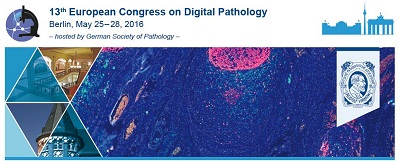Diagnosis Of The Chronic Lymphocytic Leukemia (CLL) Using A Raman-Based Scanner Optimized For Blood Smear Analysis (M3s Project)
Abstract
Introduction/ Background
In hematology, actual diagnosis of B chronic lymphocyte-leukemia (CLL) is based on the microscopic analysis of cell morphology from patient blood smear. However, new photonic technologies appear promising to facilitate and improve the early diagnosis, prognostic and monitoring of personalized therapy. The development of automated diagnostic approaches could assist clinicians in improving the efficiency and quality of health services, but also reduce medical costs.
Aims
The M3S project aims at improving the diagnosis and prognosis of the CLL pathology by developing a multimodal microscopy platform, including Raman spectrometry, dedicated to the automatic analysis of lymphocytes.
Methods
Blood smears were prepared on glass slides commonly used in pathology laboratories for microscopy. Two types of sample per patient were prepared: a conventional blood smear and a deposit of “pure†lymphocyte subtypes (i.e. normal B, CLL B, T and NK), sorted out in flow cytometry by using the negative double labeling technique. The second sample is used for the construction of a database of spectral markers specific of these different cell types. The preparations were analyzed with the multimodal machine which combines i) a Raman micro-spectrometer, equipped with a 532nm diode laser excitation source; ii) a microscope equipped with 40x and 150x lenses and a high precision xyz motorized stage for scanning the blood smear, and localizing x-y coordinates of representative series (~100 for each patient) of lymphocyte cells before registering three Raman spectra; these cells of interest being previously localized by an original method based on the morphology analysis. After the Raman acquisitions, the conventional blood smears were submitted to immunolabelling using specific antibodies. For the establishment of the Raman classifiers, this post-acquisition treatment was used as reference to distinguish the different lymphocyte sub-populations. Raman data were then analyzed using chemometric processing and supervised statistical classifiers in order to construct a spectral library of markers highly specific of the lymphocyte type and status (normal or pathological).
Results
Currently, a total of 60 patients (CLL and healthy) were included in the study. Various classification methods such as LDA (Linear Discriminant Analysis), PLS-DA (Partial Least Square Discriminant Analysis), RF (Random Forest) and SVM (Support Vector Machine), were tested in the purpose to distinguish tumoral B lymphocytes from other cell types. These classification algorithms were combined with feature selection approaches. The best performances were around 70% of correct identification when a three-class model (B-CLL vs B-normal vs T and NK lymphocytes) was considered, and 80% in case of a two-class model (B-CLL vs B-normal lymphocytes). These encouraging results demonstrate the potential of Raman micro-spectroscopy coupled to supervised classification algorithms for leukemic cell classification. The approach can find interest more generally in the field of cyto-hematology. Further developments will concern the integration of additional modality such as Quantitative Phase Imaging on one hand to speed the exploration process of cells of interest to be probed, and on the other hand to extract additional characteristics likely to be informative for CLL diagnosis. In addition, the identification of prognostic markers will be investigated by confronting the photonic data to clinical patient information.
Â
Downloads

This work is licensed under a Creative Commons Attribution-ShareAlike 4.0 International License.
Authors who publish with this journal agree to the following terms:
1. Authors retain copyright and grant the journal right of first publication with the work simultaneously licensed under a Creative Commons Attribution License that allows others to share the work with an acknowledgement of the work's authorship and initial publication in this journal.
2. Authors are able to enter into separate, additional contractual arrangements for the non-exclusive distribution of the journal's published version of the work (e.g., post it to an institutional repository or publish it in a book), with an acknowledgement of its initial publication in this journal.
3. Authors are permitted and encouraged to post their work online (e.g., in institutional repositories or on their website) prior to and during the submission process, as it can lead to productive exchanges, as well as earlier and greater citation of published work (See The Effect of Open Access).
4. In case of virtual slide publication the authors agree to copy the article in a structural modified version to the journal's VS archive.








